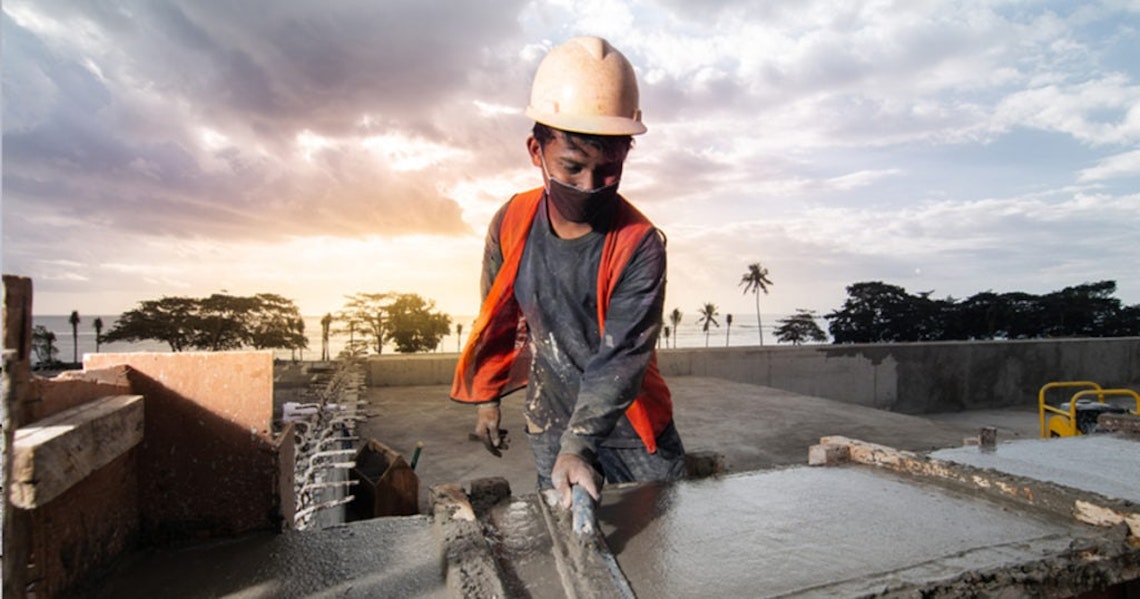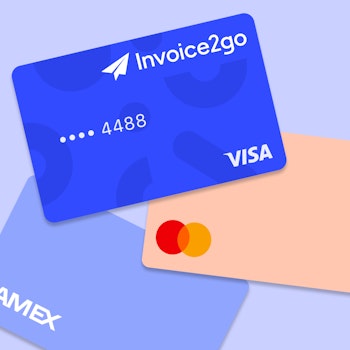
How to run a successful construction business during a pandemic
The pandemic has touched the construction industry in many ways—some good, some not so great. Many have been forced to shut down operations because of lockdowns, and the start-stop-start again cycle has made it difficult to forge ahead.
Small construction companies, especially, have been hit hard. Unless there was a contingency plan going in and a lot of cash in reserve, many struggled to keep their businesses afloat. After all, it’s hard to keep good workers if you have no work for them, and everything from bidding jobs to getting referrals has become a lot more challenging.
Whatever changes the pandemic has meant for you, there’s no doubt you’ve had to pivot practically overnight. Here are a few items that most of you can probably relate to:
- Finding skilled workers
- Increased timelines and costs
- Inability to take on new business
- Delayed timelines and schedules
- Health and safety compliance
- Supply chain disruption
- Supplier unpredictability
- Materials shortages
- Impaired cash flow
… and that’s just what we skimmed off the top! Suffice to say, if you were operating job-to-job before the pandemic, COVID might have been the end of the line. For companies that had to shut down quickly, careful planning was essential. Decisions had to be made, and risks needed to be assessed and mitigated. In many cases, the difference between sink or swim came down to problem-solving and thinking outside the box. Fortunately, in the construction industry, innovation is in our DNA!
Shifting Attitudes: Making it Work
Customer anxiety is high, and tolerance is low, meaning project managers and subcontractors need to exercise extra empathy and caution to ensure smooth sailing. Collaboration is even more critical than ever; you need to be able to trust everyone you’re working with to meet expectations.
It’s a veritable minefield of things that could go wrong. However, if you plan well and approach things methodically, you might just find new avenues to growth and ways of improving business processes that will take your company to the next level.
Progress, you say? Sure, these times are unprecedented, but every paradigm shift brings opportunities to grow wiser and do better. Not sure how to turn that anxiety into excitement? Read on – we’ve got a few ideas we think you’ll enjoy.
New Opportunities Fueled by Pandemic Lifestyle Changes
Everybody’s doing life a little differently these days—and that correlates directly to changes in the construction industry, especially when it comes to residential construction.
People who once went to the office for work are now working from home. Kids are doing online learning or being home-schooled, and many have started home-based businesses to create something more sustainable for themselves. Many families have upsized their living situation to gain more functional space, extra privacy, or to take in elderly relatives.
Real estate, in general, has gone through a seismic shift. People are moving out of urban areas into places where they can get more house for their buck—and that often means they’re willing to do the remodeling necessary to make the new home perfect for them.
Some of the most common pandemic remodels we’re seeing include:
- Home offices. Whether it’s carving out dedicated space within the existing home, adding an accessory dwelling unit, or converting a basement, garage, or attic, the home office is now a staple of post-pandemic living.
- Activity rooms/classrooms/hobby rooms/studios. For families with children—especially if they’re learning at home—a dedicated space is essential to ensure everybody stays focused and on-track. A separate activity room can also double as a craft room or playroom to keep the mess contained. For those who’ve taken up new hobbies or decided to dedicate more time to doing something creative, a private studio encourages inspiration.
- Gourmet kitchens. Spending more time at home and not going to restaurants means two things: a lot of money saved and the need for a decently equipped kitchen to cook in. Kitchen remodels have always been among the most popular type of upgrades. The difference is that now, the investment is less about adding curb appeal and more about gaining quality and convenience.
- More privacy. Teenagers, spouses, parents, roommates—whatever the household looks like, people simply don’t want to be on top of each other 24/7. Then there’s the safety issue. How do you isolate yourself from others in your household who might have a very different work and social life than you do? Separate spaces are a must, even if it’s just a barrier wall to divide a room.
- Non-porous surfaces. As the need for hygiene and cleanliness reigns supreme, there is a renewed trend toward non-porous surfaces, both in the bathroom and kitchen. Stainless steel and quartz countertops, ceramic, porcelain, and laminate flooring are all excellent examples.
- Touch-free amenities. Smart home technology is having a post-covid spotlight moment as well. Faucets can be triggered with a gesture, smart appliances can be controlled from a mobile device, and just about everything (including the shower and lights) can be pre-programmed to preferences and voice-activated when needed. Best of all, since nobody’s touching the controls, they’re virtually maintenance-free.
- Outdoor living. The general consensus is that COVID is less likely to spread in open-air environments. While being outside is no substitute for masking up, washing your hands, and keeping a safe social distance, come summertime, it’s where everybody’s going to want to be. Outdoor kitchens, entertainment and dining areas, bars, conversation pits, fire pits, and even outdoor theaters are all great ways to enjoy life more and stay safe.
- Fitness and wellness rooms. Germs love gyms, or so they say. Having a fitness center at home means you don’t have to sweat it with strangers. Add floor-to-ceiling mirrors to check form, a big-screen TV to do online workouts, and a steam shower or personal sauna to complete the experience.
Ensuring Success, Despite The Challenges
To help get you thinking about what you can do to plan, prepare, and ensure business continuity no matter what might happen in the future, we’ve put together some actionable tips specifically geared to small construction companies. In truth, what follows are techniques used by some of the biggest and most successful companies, but once you know them, they can be leveraged as needed to support your ongoing success and growth.
Ultimately, these volatile times require a little ingenuity.
Develop Ideal Buyer Personas
How well do you know your customers? To get a better bead on what your customers might be interested in, work on developing a few “buyer personas.” Buyer personas are an excellent way to predict where you should focus your time, energy, and resources.
Start by identifying your best customer. Think about the things they care about, their lifestyle, and their values. Create a detailed profile that describes them to a tee—in fact, create as many as you feel are necessary to cover your entire demographic. These personas will go on to support all of your future marketing efforts. When you can articulate a customer’s problems, you’re in a much better position to solve them.
Build Your Online Presence
Since word-of-mouth is currently less effective than usual, more companies will need to rely on their websites and online advertising to gain leads and attract new business.
Is your website up to date? If you haven’t had a website refresh in a while or your products, services, and team bios are not well-articulated, you are likely missing out on some valuable business.
Since people are spending more time online, you want to make sure of two things: first, they need to find your website and social pages. Second, you’ll want to make sure they find what they’re looking for once they get there. Search engine optimization is a complex topic, but it’s important for many reasons—not the least of which is that good SEO places you higher in organic (unpaid) search engine results.
If you are new to SEO, you might want to seek out some help. You’ll need to research your keywords, key phrases and find out what your top competitors are doing right. Ultimately, you want to make sure your content is high-quality and that your site delivers a good user experience.
Fortunately, there are literally thousands of freelancers out there who will do a lot of this stuff at a very low cost. Check out sites like Fiverr and Upwork to find the SEO and web design expertise you need.
Are your social media channels current? Social channels are an essential part of your online strategy. Not only do they contribute to SEO rank, but they also extend your website’s reach a great deal. Facebook and Instagram are the most popular—especially Instagram, as it’s a visual channel.
Whatever channels you choose to put your effort into, stay consistent, post frequently, and focus on delivering value rather than selling. Seasonal tips, remodeling ideas, and design trends are just a few of the ways you can grab their attention.
Virtual Consultations via Zoom
Doing consultations without a face-to-face might not be your style, but there’s a lot you can do without having to be in the same room. Plus, keep in mind that meeting virtually helps you determine more accurately whether the customer is a good fit for what you do. It’s also less time-consuming because you don’t have to drive to and from the location, organize schedules, and so on.
Offer a no-obligation consultation to become more acquainted with the customer and them with you. Initial walk-throughs can be done using Zoom or FaceTime. These will provide you with enough information to work up a rough quote. New clients will appreciate the convenience, and it will help you seal the deal faster.
Protect Your Cash Flow
Despite your best efforts, there may be times when you simply can’t work. To ensure you can dive back in once the coast is clear, you need to prioritize cash flow. This means seeking out all the funding options you have available to you.
Check into what government stimulus programs you might be eligible for, as there might be funds available at lower rates than you’d get from a traditional lender. Some of what you borrow might also be forgivable, which means a portion of what you borrowed might not need to be paid back.
Research your options both at the federal and state level, and look into funding available through your local BIA or professional associations.
Additionally, you’ll want to be sure you have an easy way to submit invoices, accept payments, and generate cash flow reports. The easier and more intuitive your accounting workflows are, the faster you’ll get paid, and that’s always the goal.
Digitize As Much As Possible
These days, technology is far more accessible than it ever has been. There are dozens of cloud-based platforms that will help you accomplish everything you need to do.
From building your teams to organizing drawings, quote submissions and sign-offs, permitting, change orders, materials selections, project management, sub-contractor management, safety compliance, communication, insurance, and more, you’ll have every detail about the job in the palm of your hand.
Because these systems are cloud-based, they’re accessible from any device and affordable too. For a set monthly subscription fee, you’ll gain all kinds of value and efficiencies you never had before. Your employees, customers, and the powers that be will love you for it. Take some time to research your options and choose the solution with the features you’ll use the most.
Improve Your Workflows
There’s nothing worse than dropping the ball on a pending estimate. Following up with a potential client is one of the best ways to ensure you stay top-of-mind when they’re ready to buy.
Once you submit an estimate, you’ll generally want to follow up within a week. When you do, make it personal. Pick up the phone and call rather than sending an email. The construction business is people-centric, so the more direct attention you can give to it, the better. In a small construction company, your customers are overwhelmingly residential, which means the job you're bidding on is highly personal. You need to let them know you care just as much as they do.
To keep yourself on track (because distractions are everywhere), schedule your follow-up as soon as you’ve submitted the invoice. Mark it in your calendar and treat it like a meeting, or set up an alert on your phone.
Of course, there will be some customers who’ll be so eager to get going that they’ll want to submit their approval and dive right in. If you’re using Invoice2go, approvals are three times faster. Plus, you can instantly convert that estimate to an invoice, and you’ll be that much closer to getting paid.
Related Articles

How to accept credit card payments on Invoice2go in 3 simple steps

Accept payments online via Apple Pay and Google Pay

Must-not-miss write-offs as you wrap up 2022 year-end finances

5 ways accepting credit and debit card payments helps your business stay resilient

4 easy ways to increase cash flow today

What is Small Business Saturday and why is it important?
The features and surprising benefits of a well-designed packing slip
